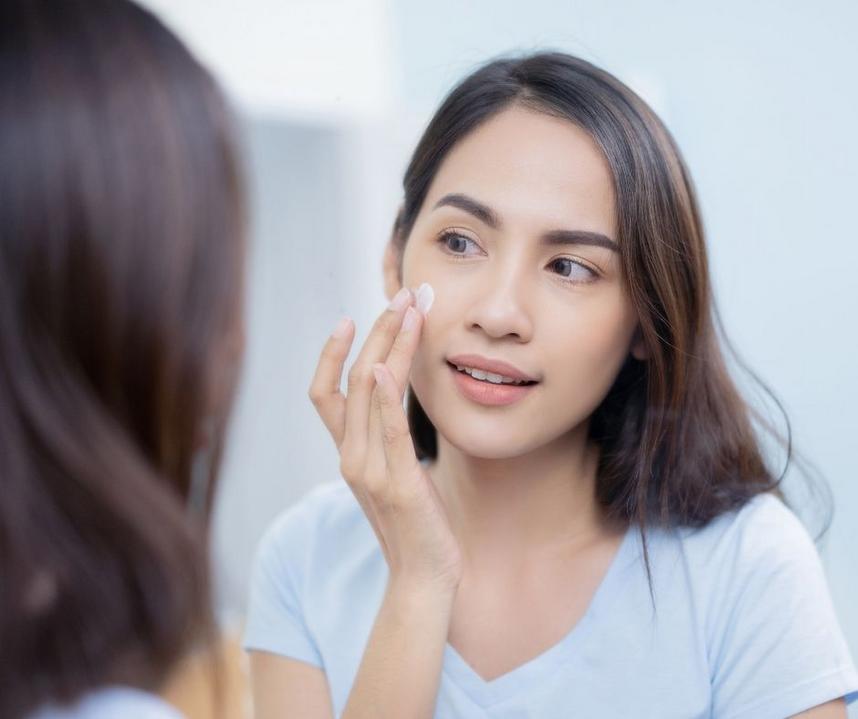Capitalize on damp skin
Apply your moisturizer while skin is still moist after bathing or washing your face (a good general rule is within 3 minutes) with a gentle skin cleanser. The idea is to take advantage of dewy skin from the extra water absorbed and seal it in before it all evaporates away. Additionally, pat drying instead of rubbing dry can be less irritating to your skin.
Does your moisturizer need a boost?
Moisturizers with a high water content and humectant ingredients have a light but hydrating feel. These are typically lotions, serums, gel-cremes or hydrogels, and they often provide an appropriate level of moisture for normal or oily skin. Examples of humectants commonly found in moisturizers include glycerin, sorbitol, propanediol, pentylene glycol, sucrose, urea, hyaluronic acid, sodium PCA, and panthenol. However, if you have dry or very dry skin, you can get an added boost by layering moisturizers.
Layer up
To layer, start with the lightest moisturizer first and follow with an emollient product like a cream or ointment. Emollients commonly found in moisturizers include silicones, esters, ceramides, vegetable oils, butters (cocoa butter, shea butter), fatty alcohols (stearyl alcohol, cetyl alcohol), lanolin, hydrocarbons (petrolatum, mineral oil, squalane) and waxes. Hydrating lotions and serums work synergistically with thick creams and ointments because the thicker moisturizer helps seal in the moisture attracted by the lotion.
Apply moisturizer before sunscreen
As a general rule, apply daily sunscreen as your last layer in your skincare routine. When wearing makeup, primer and makeup can be applied over your sunscreen. For multifunctional products, this can occasionally get tricky. For example, if you use a tinted moisturizer and a separate sunscreen product, it is generally recommended to apply the sunscreen last.
Mix and match
Different areas of the body have different hydration needs. Hands and elbows often need more moisturization than your shoulders, but your face can also benefit from a more specialized approach. For example, you may get better results applying a lighter lotion to your T-zone and a heavier cream to your cheeks. Vanicream™ Moisturizers come in a variety of formulations and sizes to meet your needs. They are free of common chemical irritants and suitable for sensitive skin.
Source:
https://www.aad.org/public/everyday-care/skin-care-basics/care/apply-skin-care-certain-order
